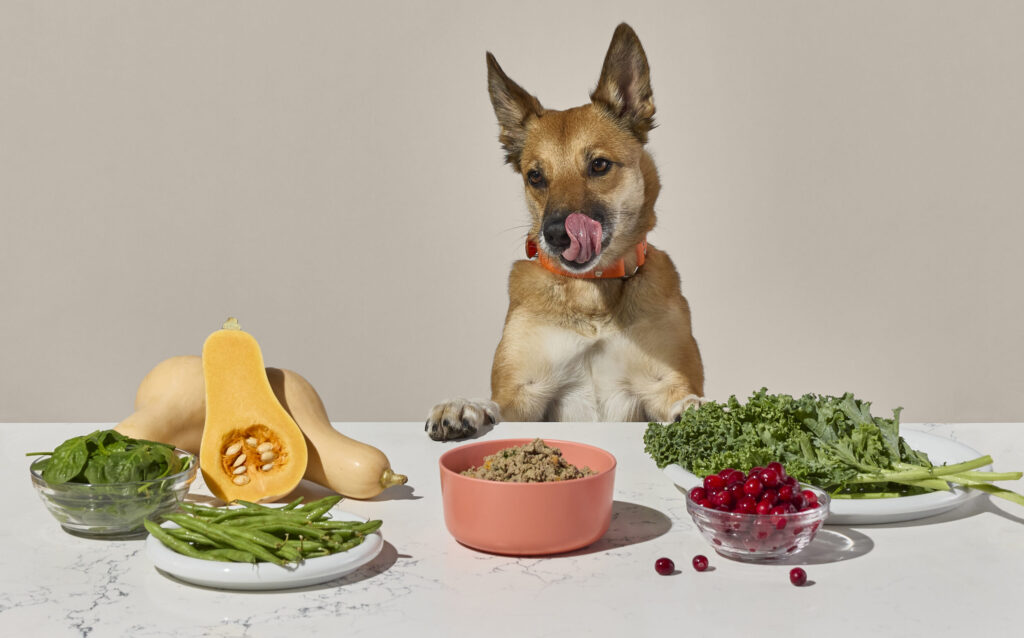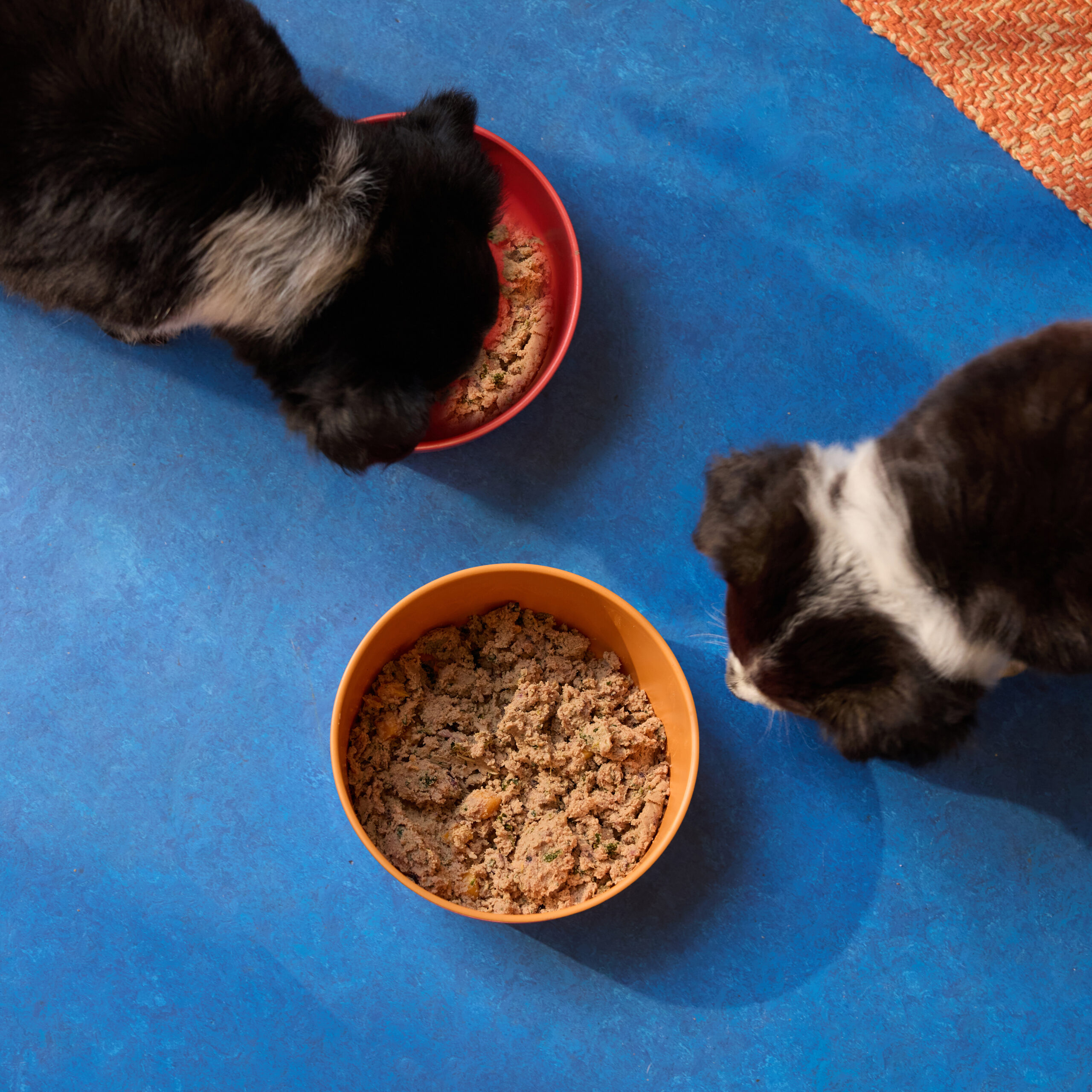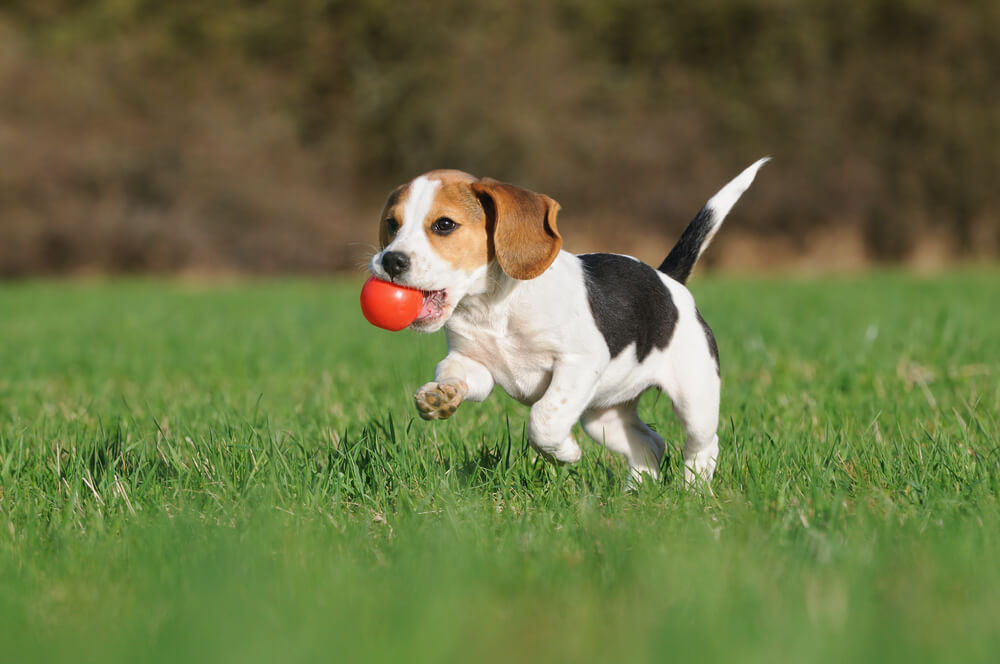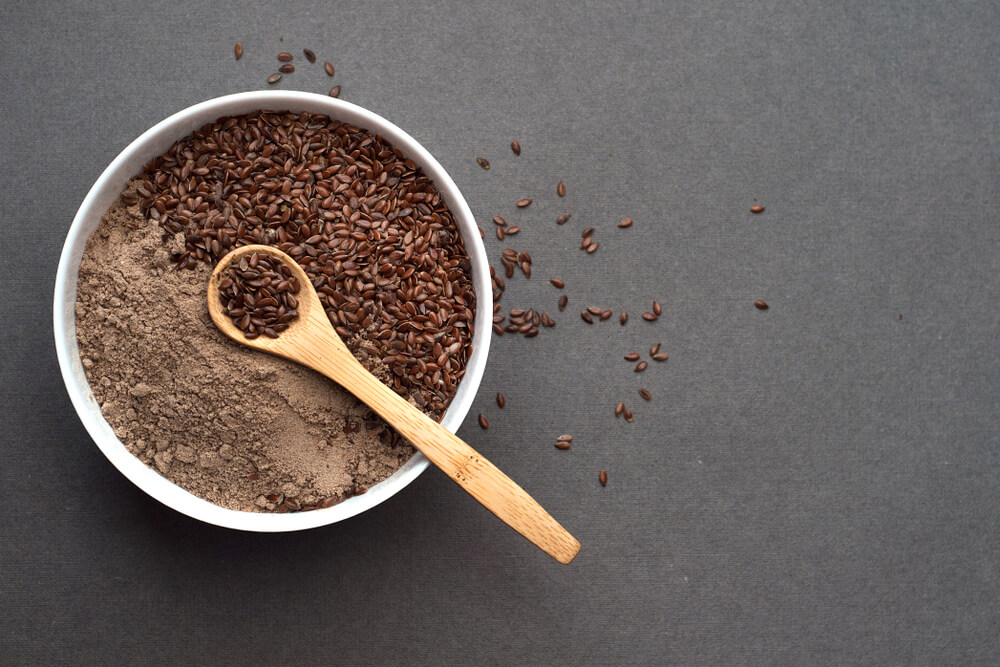Hey Ollie blog readers! We’re offering you an exclusive 60% OFF your starter box! Try now!
As a pup parent, you want to make sure your dog gets the best possible nutrition so they can live their best possible life. When choosing what to feed your dog, understanding what makes an option healthy can transform your dog’s health, energy, and longevity.
The Foundation: Essential Nutrients Your Dog Needs
Your dog depends on six fundamental compounds to maintain optimal health:
- Water (dogs are nearly 80% water, just like humans)
- Proteins and amino acids for strong muscles and healthy tissue
- Healthy fats, especially omega-3 fatty acids for nutrient absorption and shiny coats
- Carbohydrates for sustained energy
- Essential minerals supporting blood and organ function
- Vitamins including B vitamins, vitamin C, E, and A for immune support and healing
These nutritional building blocks work the same way in dogs as they do in humans. Dogs have evolved as facultative carnivores—meaning they thrive on both meat and plant matter, giving you flexibility in creating a balanced diet.
The Association of American Feed Control Officials (AAFCO) establishes nutritional adequacy standards that must be met or exceeded for pet food to be marketed as “complete and balanced” for specific life stages [1]. While this regulatory oversight provides baseline standards, veterinarians consistently recommend choosing the highest quality food within your budget to support your dog’s immune system, dental health, and overall wellbeing.
Ready to see what complete nutrition looks like? Explore Ollie’s ingredient philosophy.

Why the Best Fresh Dog Food Makes All the Difference
Human Grade Dog Food: More Than Marketing
Under AAFCO’s 2023 guidelines, manufacturers must document the origins of every ingredient throughout the supply chain to make human grade claims. Human grade refers to the entire product and every ingredient in it, and all facilities must be registered as both FDA food and feed facilities [2].
The distinction between “human-grade” and “feed-grade” ingredients is critical for your dog’s health. Human-grade ingredients meet the same rigorous safety and quality standards set by the USDA for human foods, meaning you’re feeding your dog food made with the same level of care and quality you’d expect for yourself .
This isn’t just about premium pricing—it’s about fundamental safety and nutrition standards that can impact your dog’s health for years to come.
The Science Behind Fresh Dog Food Benefits
The research on fresh diets is compelling and continues to grow:
Extended Lifespan: Studies have shown that dogs fed fresh diets can live up to 2.5 years longer than those on commercial diets [3]. That’s potentially years more of morning walks, belly rubs, and cherished memories with your furry family member.
Superior Nutrition Absorption: Dogs absorb nutrients better from fresh food than kibble diets, showing higher digestibility rates for dry matter, organic matter, energy, and fats, leading to lower daily food intake because dogs absorb nutrients more efficiently [3]. This means your dog gets more nutrition from every bite.
Better Health Markers: Dogs eating fresh food have lower pro-inflammatory markers and better digestion with firmer stools, less waste, and reduced liver strain shown by lower alkaline phosphatase levels [3]. You’ll likely notice the difference in your dog’s energy levels and bathroom habits within weeks.
Cancer Prevention: Dogs need just 20% fresh food in their diet to see a 70-90% reduction in cancer cell growth [3]. Even incorporating some fresh food into your dog’s diet can provide significant protective benefits.
Fresh dog food tends to be more digestible than dry or canned dog food and may offer long-term health benefits. While more research is needed in pets, some experts believe less-processed diets may also support better long-term health in dogs [4].
Discover how fresh food can transform your dog’s health.
Healthy Dog Food Alternatives That Actually Work
Moving Beyond Processed Kibble
While convenience and cost make dry kibble appealing to busy pet parents, your dog’s body craves moisture and whole ingredients. Fresh food, free from cheap fillers and starches, helps keep your dog at a healthy weight. Many pet foods contain inexpensive fillers (e.g., corn, wheat, rice, potatoes) so manufacturers can make more money, and starch-heavy diets lead to weight gain [5].
Think of it this way: Many commercial dog foods are comparable to fast food—loaded with unhealthy ingredients. If you eat fast food every day, your health will suffer. The same applies to dogs on a commercial diet [5].
Fresh Food: The Goldilocks Solution
Fresh, gently cooked food offers the perfect middle ground—safer than raw diets while providing superior nutrition compared to heavily processed kibble. You get the benefits of whole ingredients without the bacterial contamination risks associated with raw feeding.
Companies like Ollie solve the complexity challenge by using human-grade ingredients in recipes formulated with veterinary nutritionists, and delivering perfectly portioned meals to your door.
Learn more about Ollie’s approach to fresh nutrition.

Best Natural Puppy Food: Special Considerations for Growing Dogs
Puppies face unique nutritional challenges during their rapid growth phases. Their developing bodies need precise nutrition ratios to build strong bones, healthy organs, and robust immune systems.
A newer guideline for puppy foods includes statements about large dogs (those over 70 pounds). Large-breed puppies grow faster than small dog breeds, and this rapid growth can lead to serious developmental orthopedic diseases (DOD). Feeding a puppy food for large breeds can lower their risk of DOD [1].
What Makes Puppy Nutrition Different
Growing puppies need:
- Higher protein levels for muscle and tissue development
- Controlled calcium and phosphorus ratios to prevent skeletal problems in large breeds
- DHA fatty acids for brain and eye development
- Smaller, more frequent meals to match their faster metabolism
The best natural puppy food combines these precise nutritional requirements with whole, recognizable ingredients. Fresh food options formulated with veterinary nutritionists—like Ollie’s recipes—meet AAFCO standards for all life stages, including the specific needs of large breed puppies.
Avoid puppy foods with excessive fillers, artificial preservatives, or generic “meat meals” that don’t specify the protein source. Your puppy’s foundation nutrition sets the stage for their entire life.
Get your puppy started right with personalized nutrition.
Dangerous Foods: What Never Belongs in Your Dog’s Bowl
Certain foods pose serious, sometimes fatal risks to dogs. As a responsible pet parent, you need to know these danger zones:
Immediately Toxic Foods
- Chocolate and caffeine (methylxanthines) – cause seizures and organ failure
- Xylitol (artificial sweeteners in gum, candy, some peanut butters) – causes dangerous blood sugar crashes
- Grapes and raisins – kidney failure, even from small amounts
- Onions, garlic, chives (alliums) – destroy red blood cells
- Alcohol – never give dogs any amount
- Macadamia nuts – cause weakness, vomiting, and hyperthermia
Physical Hazards
- Cooked bones – splinter and cause internal injuries
- Large raw bones – choking hazards that can break teeth
- Fruit pits and cores – choking and cyanide risks
Keep emergency vet contact information handy and never hesitate to call if your dog ingests something questionable.
Smart Supplementation vs. Complete Nutrition
Many pet parents wonder about adding supplements to their dog’s diet. Here’s what you need to know:
University of California, Davis researchers found that 95% of homemade dog diets fail to meet canine nutritional needs [5]. This is why DIY approaches, while well-intentioned, often create more problems than they solve.
However, professionally formulated fresh foods eliminate this guesswork. The best fresh dog food comes from reputable companies who staff board-certified veterinary nutritionists and adhere to AAFCO nutrition guidelines [4].
Instead of playing supplement roulette, focus on providing complete, balanced nutrition through high-quality whole foods. When your dog’s diet is properly formulated, additional supplements are rarely necessary—and may even be harmful if they create nutrient imbalances.
See how Ollie ensures complete nutrition without the supplement confusion.
Making the Transition: Your Action Plan
What to Look for in Healthy Dog Food
- Human-grade ingredients you can recognize and pronounce
- AAFCO nutritional adequacy statements confirming complete and balanced nutrition
- Formulated with a veterinary nutritionist to ensure proper nutrient ratios
- Minimal processing that retains maximum nutritional value
- Transparent sourcing with clear ingredient origins
Getting Professional Guidance
It is essential to work with your veterinarian or veterinary specialist to help ensure your pet is on a diet that is safe and effective. The American College of Veterinary Nutritionists has many board-certified nutritionists who are willing to work with pet parents to formulate safe and balanced diets [6].
Your vet knows your dog’s individual health history, current medications, and specific needs—making them your best partner in choosing the right nutrition plan.
Transform Your Dog’s Health Starting Today
The healthiest dog food combines human-grade ingredients, scientific formulation, and convenient delivery. You don’t need to become a canine nutritionist or spend hours researching ingredients. Companies like Ollie have already done the complex work—consulting with veterinary nutritionists, sourcing premium ingredients, and creating balanced recipes. With shinier coats, better digestion, higher energy levels, fresh food is a great way to support a long, happy life for your dog.
Start your dog’s transformation with a personalized fresh food plan that takes the guesswork out of optimal nutrition.
Frequently Asked Questions
How quickly will I see improvements after switching to fresh food?
Most pet parents notice changes in their dog’s energy, coat quality, and digestion within 2-3 weeks of transitioning to fresh food. The 70-90% reduction in cancer risk associated with just 20% fresh food inclusion provides long-term benefits that build over time.
Is fresh dog food safe for puppies and senior dogs?
Yes, when properly formulated with veterinary nutritionists to meet AAFCO standards for all life stages. Puppies especially benefit from the higher bioavailability of nutrients in fresh food during their critical growth phases.
What if my dog is a picky eater?
Fresh food’s appealing aroma and natural flavors often entice even the pickiest eaters. The variety of proteins and recipes available through companies like Ollie helps you find options your dog will love.
How does the cost compare to premium kibble?
While fresh food has a higher upfront cost, the improved nutrient absorption means dogs often eat less food overall. Factor in potential veterinary savings from better health outcomes, and fresh food becomes a smart long-term investment.
Do I need to refrigerate or freeze fresh dog food?
Yes, fresh food requires proper storage—typically frozen until use, then thawed in the refrigerator. This ensures food safety while maintaining nutritional integrity. Most fresh food companies provide detailed storage and serving instructions.
Citations
[1] https://www.petmd.com/dog/nutrition/What-Is-AAFCO-and-What-Does-It-Do
[2] https://fourleafrover.com/blogs/natural-health/aafco-guidelines-for-human-grade-dog-food
[3] https://wagtantrum.com/blogs/news/why-fresh-dog-food-could-add-years-to-your-pets-life-2025-guide
[4] https://www.petmd.com/dog/nutrition/pros-and-cons-fresh-dog-food
[6] https://ocm.auburn.edu/experts/2019/04/151146-pet-food.php
Tagged As:

The nutrition your dog needs,
the food they want.

Enjoying our articles? Subscribe our Newsletters and get new articles directly to your inbox
You might also like
18 September 2025
6 MINS READ
Can Dogs Eat Flaxseed? Is Flaxseed Safe For Dogs?
Wondering if flaxseed is safe for your dog? This guide breaks down the benefits, risks, and best ways to add flaxseed, or flaxseed oil, to your pup’s diet.
18 September 2025
6 MINS READ
Why is My Dog Not Eating But Acting Normal? Causes & What To Do
Worried your dog isn’t eating but still acting normal? Here’s what could be going on and what to do to help your pup get their appetite back.
18 September 2025
5 MINS READ
Can Dogs Eat Crab? Is Crab Meat Safe For Dogs?
Thinking about giving your dog crab meat? Find out if it’s safe, what risks to watch for, and when crab might do more harm than good.







